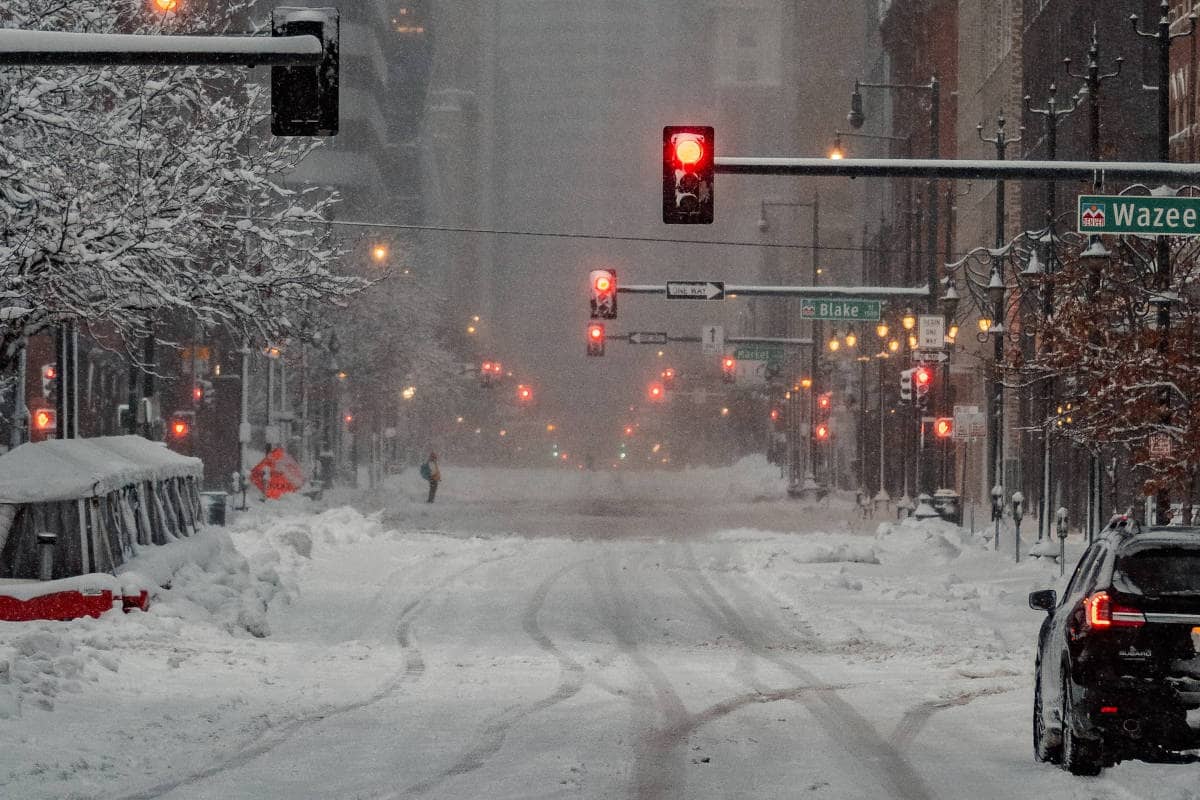
Winter can be a cruel mistress for commercial property owners and businesses in the Denver area. For the most part, we have relatively mild winters, but we all know that all it takes is one good snowstorm to cause a bit of chaos for a couple days. Even if we don’t have too much accumulation from winter weather, daytime thawing and nighttime freezing can cause icy conditions for days on end. But staying on top of winter hazards goes far beyond just keeping the sidewalks shoveled and salted; there are several elements that can lead to liability risks on your commercial property.
Here are a few winter weather liability risks to be aware of on your commercial property or business:
Common Winter Liabilities for Denver Commercial Properties
Ineffective Drainage
Hazardous walking surfaces are the most common cause of winter injuries, accounting for about 55% of all winter-related accidents. Water runoff and improper drainage both play a huge part in creating (or compounding) injury risks on walking surfaces.
Clogged gutters and downspouts can create ice dams on roofs and cause water to drain off in unexpected places and create huge risks of slips and falls. If the runoff decides it wants to fall off the roof and onto the walkway right in front of the building entrance, you’re going to have a much greater risk of slips and falls than if the water is diverted away properly. Likewise, misaligned downspouts can direct water towards walkways or other areas of the property and create icy hazards.
If there are any low spots on walkways or the parking lot where water does tend to flow towards and collect into puddles, you may need to make drainage improvements to prevent any unsafe conditions. Snow piles are another possible liability risk, as their runoff can create icy conditions for months.
Finally, ensure that any storm drains on your property stay clear so that all the runoff has somewhere to go.
Uneven or Damaged Hardscapes
When combined with already-hazardous icy conditions, damaged or uneven hardscapes are another huge risk of slips, trips, and falls during the winter. Frost action, in particular, can be hard on concrete and brick, causing it to crack, shift or even crumble over time. It’s important to keep all walking surfaces in good condition to prevent any accidents. Some common hardscape issues include:
- Uneven, cracked, or missing pavers
- Sunken areas in paver walkways (a huge risk for forming puddles/icy patches)
- Cracked or shifting concrete walkways
- Damaged or uneven stair steps and ramps, and loose or broken hand rails
- Cracked or crumbling curbs and retaining walls
Keeping your hardscapes in good condition will help reduce the risk of injury, and will also ensure that they don’t detract from your property’s curb appeal.
Overhead Hazards
Snow and ice on the ground aren’t the only things to worry about in the winter; sometimes hazardous conditions can exist overhead. Snow, ice dams, and icicles can build up on roofs, awnings, and other overhanging structures, which can create falling hazards that can lead to significant personal injury or property damage.
It’s important to ensure that snow and ice can drain off these surfaces properly, or should be removed manually if possible; snow rakes (aka snow roof removal tools or roof rakes) are the most common solution.
Snow, ice, and heavy winds can also cause damage to tree limbs, electrical lines, and other overhanging objects. Tree limbs can easily weigh a few dozen (or a few hundred) poundsl; proper tree care and preventative trimmings will reduce the risk of them falling and causing serious injuries.
Building Entrances
Building entrances are typically the most-trafficked areas of any business or commercial property, so they require extra care to prevent any accidents. As people come in, they tend to track snow, ice, de-icers, and other debris inside; this can create slick conditions that increase the risk of injuries.
The best way to minimize these risks is to invest in a good set of winter entrance mats for both the exterior and interior of the building:
- Exterior mats need to be durable and have a rough texture that makes it easy to remove the largest bits of bits of snow, ice, de-icers, and other debris
- The interior mat should be made from deep-pile carpet or rigid rubber, which is better for trapping smaller particles
- It’s also a good idea to have a final, more absorbent mat to help dry off the bottom of footwear and prevent water and de-icers from being tracked all over the building
It’s best to purchase mats with a wide surface area – two paces or more – to remove as much debris as possible. Make sure to clean and dry these regularly (when weather permits) to prevent the buildup of de-icers that can be tracked inside and damage interior floors.
Prevent Winter Property Liabilities with Snow Management Services
For over 25 years, SMS has been the preferred snow removal contractor for hundreds of commercial properties in the Denver area. It all starts with winter property planning, taking the time to identify the most efficient way to keep your property clear and highlighting any possible trouble areas. Quick snow removal and de-icing are critical so that parking lots and sidewalks are clear in order to prevent winter accidents or injuries. Our team is committed to rapid response times during even the roughest winter weather. We can even haul snow off-site to keep your property presentable.
To see how SMS can help your Denver-area business or commercial property, give us a call today at (303) 750-8867 or get in touch with us online to get started.
